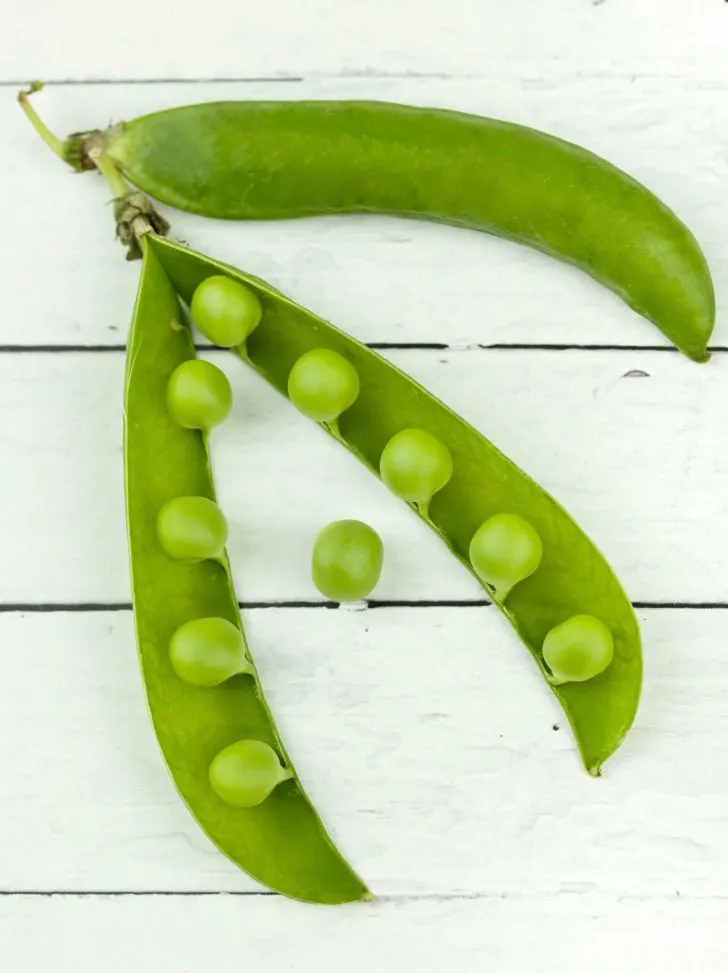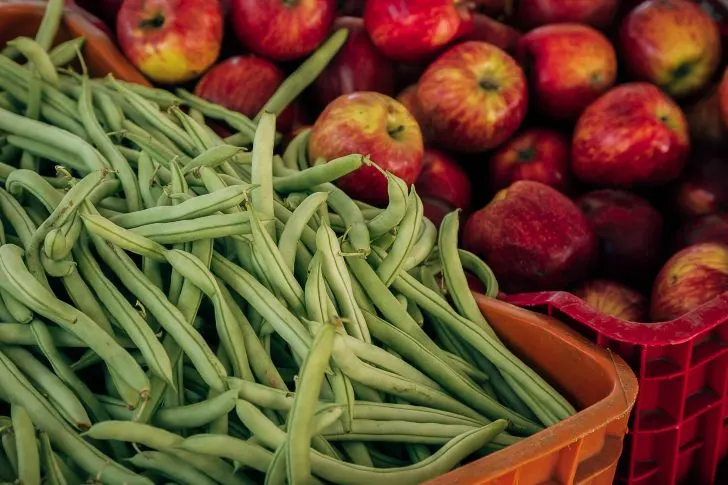Regarding the concept of fruits and vegetables, the line is pretty clear, and there is no doubt in distinguishing between them. Yet, every now and then, nature confuses us with its charisma, leaving us wondering to which class certain foods genuinely belong.
The same is the case for green beans.
Green beans are a significant part of many cuisines—adding a vibrant touch of green to our plates.
Despite their popularity in cuisines, one question still remains: Are green beans fruits or vegetables?
To be honest, finding the answer to that simple question is trickier than it appears.
However, this article explores the truth about green beans.
So, let’s embark upon a journey to solve the mystery of green beans and their rightful place in the world of fruits and vegetables.

Are Green Beans Fruits or Vegetables?
It is not clear how green beans are categorized.
Are they fruits or vegetables?
Well! The answer isn’t that simple.
Let me clarify!
To understand the answer to this question, we must understand the scientific and culinary classification of green beans.
So, let’s jump into the detail and explore the legumes further.
Scientific Classification of Green Beans
To determine the botanical classification of green beans, we closely examine their reproductive structure, and I am sure you will be surprised after hearing what we’ve found.
Green beans develop from the flower’s ovary, making them “fruits” in the botanical sense.
Seeds play a significant role in classifying fruits and vegetables.
While fruits generally contain seeds, some botanical vegetables may not have visible seeds or may produce seeds in limited quantities.
In the case of green beans, seeds inside the pod further confirm their classification as fruits.
Also, there are many similarities we have observed while comparing green beans to typical fruits like apples and oranges.
Well! Both green beans and these fruits develop from the flower’s ovary and contain seeds.
So, does that mean green beans are fruit?
You can say that, but wait!
Don’t move toward the conclusion by observing only one side of the picture.
Let’s move forward and see the other side of it.

Culinary Classification of Green Beans
Green beans find their way into various culinary dishes and cuisines, adding texture, color, and flavor to different recipes.
In cooking, green beans are often,
- Blanched
- Steamed
- Stir-fried or Sautéed
While retaining their vibrant green color and crisp texture.
In culinary contexts, the definitions of fruits and vegetables may differ from their botanical classifications because the classification really depends on the flavor profile and culinary usage.
Fruits, in culinary terms, are often associated with a sweet taste and are commonly used in desserts. They are appreciated for their natural sweetness, juiciness, and wide array of flavors.
Culinary fruits include familiar favorites like apples, oranges, berries, and melons.
Vegetables, on the other hand, are generally savory in taste and are used in a variety of savory dishes.
They encompass a wide range of plant parts, including:
- Leaves (such as Lettuce and Spinach)
- Stems (such as Asparagus)
- Roots (such as Carrots and Potatoes)
- Flower Buds (such as Broccoli and Cauliflower)
When it comes to green beans, their culinary classification aligns more with vegetables rather than fruits due to their savory taste and culinary applications.
So, where do green beans actually belong to?
Despite being classified as fruits botanically, green beans are commonly referred to and treated as vegetables in culinary contexts.
I think it’s your choice whether you want to treat them as fruits or vegetables.

Characteristics of Green Beans!
Now that you have cleared your head about their classification let’s talk about some interesting facts about green beans.
Physical Appearance and Structure
Green beans are long, slender pods that belong to the legume family.
They typically measure about 4 to 6 inches long, although variations exist among different varieties.
These pods are smooth and glossy, featuring a bright green color that intensifies as they mature. Unlike other legumes, they have an edible pod, meaning the entire bean, including the pod, can be consumed.
The pod itself is crisp and tender, offering a satisfying crunch when appropriately cooked.
Related Article: Why Is My Green Bean Plant Turning Yellow? (6 Answers) (growgardener.com)
Cultivation and Common Varieties
Green beans thrive in temperate climates and are cultivated worldwide.
They are known for their versatility and adaptability, making them popular for home gardens and commercial farms.
There are several common varieties of green beans, each with its distinct qualities.
Some popular varieties include:
- Bush Beans: These varieties grow as compact, bushy plants and do not require support. They are an excellent choice for small gardens or containers.
- Pole Beans: Pole beans, as the name suggests, grow on climbing vines and require support, such as trellises or poles. They tend to have a longer harvest period compared to bush beans.
- French Beans: French beans, also known as haricot verts, are slender and delicate, with a more refined flavor. They are often favored in gourmet cooking.
Now, let’s look at their nutritional profile.
Nutritional Profile of Green Beans
Green beans are delicious and packed with essential nutrients that contribute to a healthy diet.
Green beans are a good source of vitamins, minerals, and dietary fiber.
They contain vitamins A, C, and K, which are vital in supporting the immune system, promoting healthy skin, and aiding in blood clotting.
Additionally, green beans provide minerals like potassium, magnesium, and iron, essential for various bodily functions.
Health Benefits Associated with Green Beans
Incorporating green beans into your diet can offer several health benefits.
- Digestion: The high fiber content in green beans promotes digestive health and helps maintain regular bowel movements.
- Immunity: The antioxidants in green beans, such as flavonoids and carotenoids, help protect the body against harmful free radicals, reducing the risk of chronic diseases.
- Lean Diet: Green beans are low in calories and fat while rich in nutrients, making them nutritious for weight management and overall well-being.
With their appealing appearance, delightful taste, and unique nutritional content, green beans are a versatile and healthful addition to any meal.
Whether steamed, sautéed, or incorporated into a flavorful stir-fry, green beans offer a delightful crunch and a host of benefits that make them a beloved vegetable on plates worldwide.
FAQs
Here are the answers to some frequently asked questions.
Can a Plant be Both a Fruit and a Vegetable?
Yes, a plant can be a fruit and a vegetable, depending on the context.
In botanical terms, fruits are the mature ovaries of flowering plants that contain seeds, while vegetables are different plant parts consumed as food. However, in culinary terms, some fruits, such as tomatoes and cucumbers, are considered vegetables despite being botanically classified as fruits.
The classification as fruit or vegetable depends on how the plant is used and perceived in cooking and culinary practices.
Is There a Scientific Reason for Classifying Green Beans as Vegetables?
Green beans are classified as vegetables primarily based on culinary and cultural practices rather than strict scientific botanical definitions.
Green beans are botanically classified as legumes.
They are typically harvested and consumed in their immature stage before the seeds fully develop.
This culinary usage as a savory ingredient in cooking has led to their classification as vegetables.
Is the Green Bean a Legume?
Yes, the green bean is indeed a legume.
Green beans, also known as string beans or snap beans, belong to the legume family, scientifically known as FabaceaeorLeguminosae.
Legumes are plants that produce pods containing edible seeds, and green beansare one such example.
Are All Legumes Considered Vegetables?
No, not all legumes are considered vegetables.
Legumes, such as beans and peas, are often classified as vegetables. However, some legumes, like peanuts and soybeans, are classified differently.
Peanuts are categorized as nuts, while soybeans are considered oilseeds.
Therefore, while many legumes are vegetables, there are exceptions within the legume family.
Conclusion!
Are green beans fruits or vegetables? I hope you now understand the answer.
If we see the botanical classification of fruit, green beans develop from the plant’s ovary and are considered “fruits.” Contrarily, if we see the culinary context of green beans, they are considered vegetables. It is because they possess a savory taste and are used in various dishes.
So, because of their culinary uses, green beans are considered more as a vegetable than as fruits.
I hope this post provides you with a botanical and culinary understanding of green beans.
If you like the article, act now and share your newfound wisdom with others. Together we can grow the world where knowledge grows, and nature thrives!
Regards,
Moiz Atiq.
